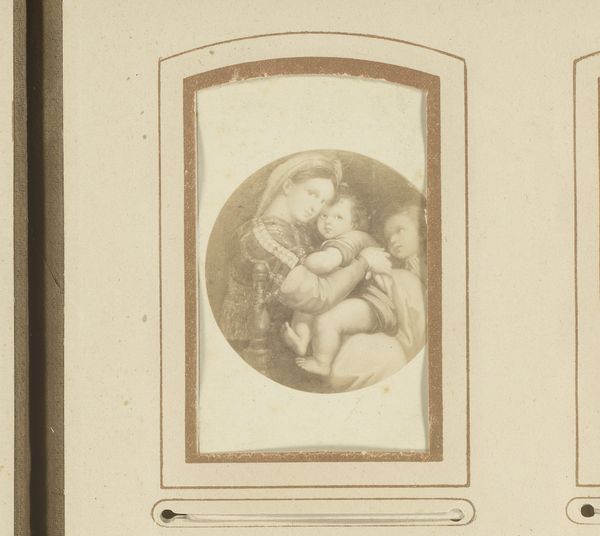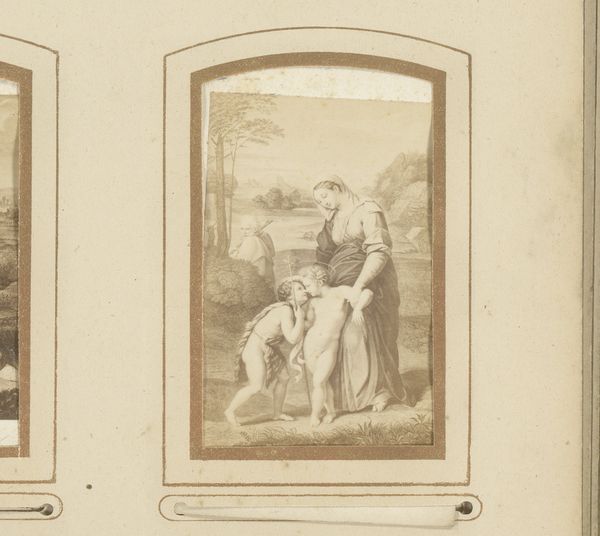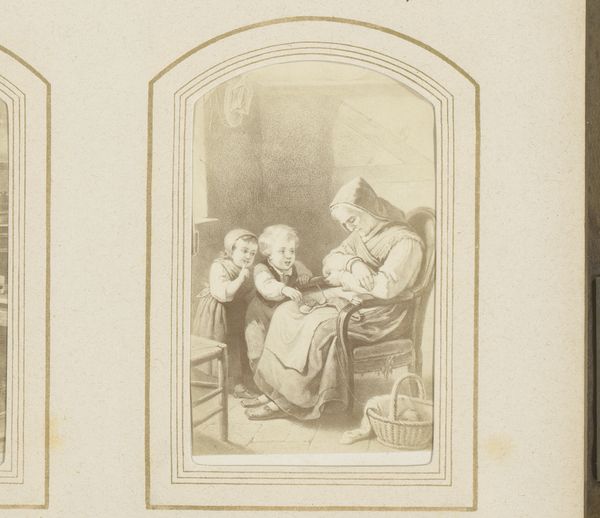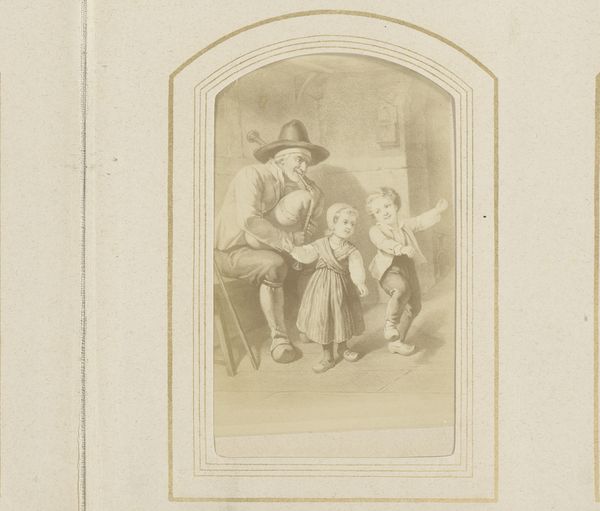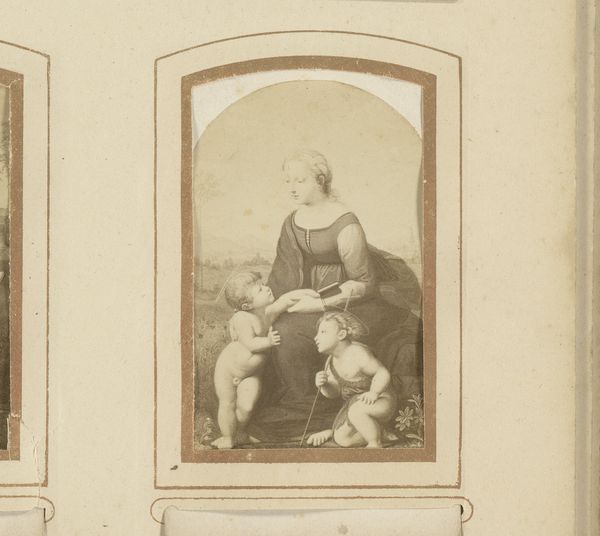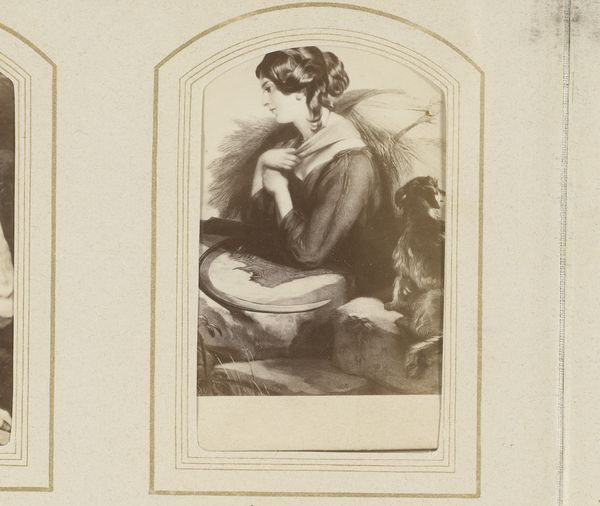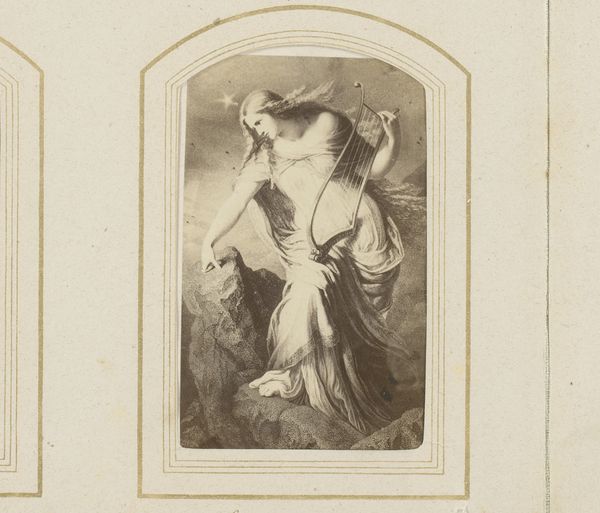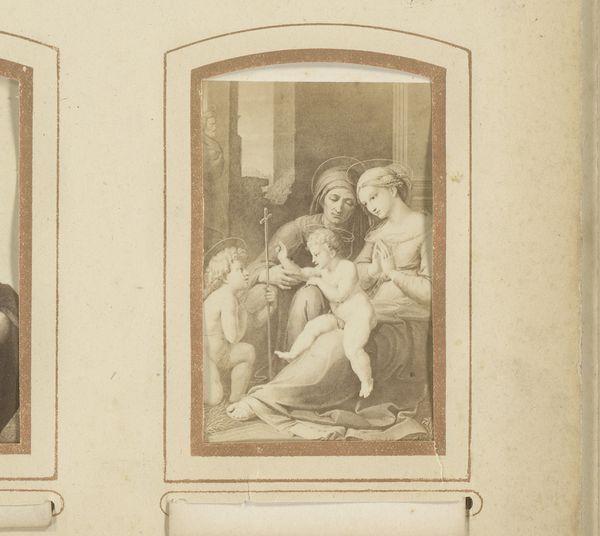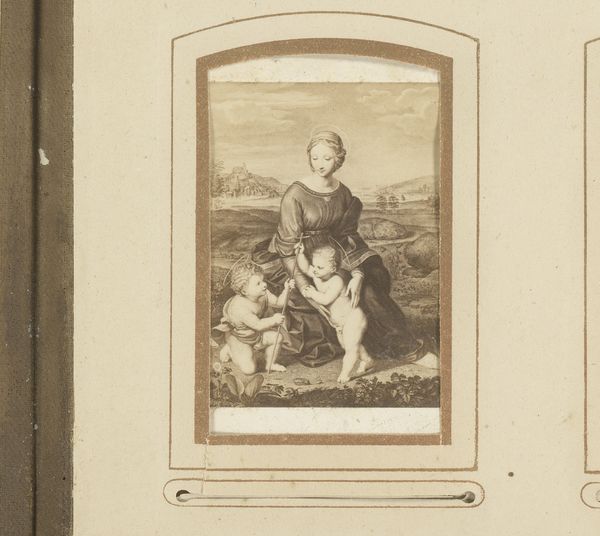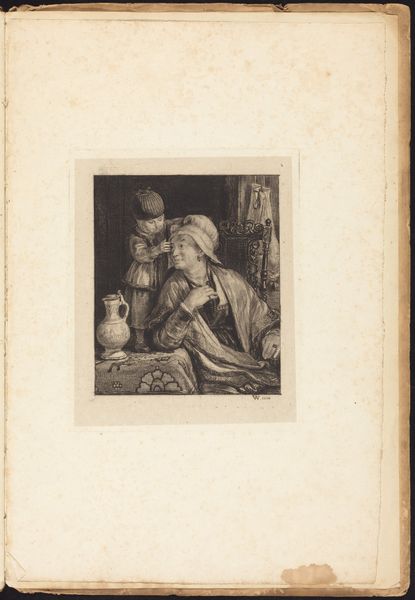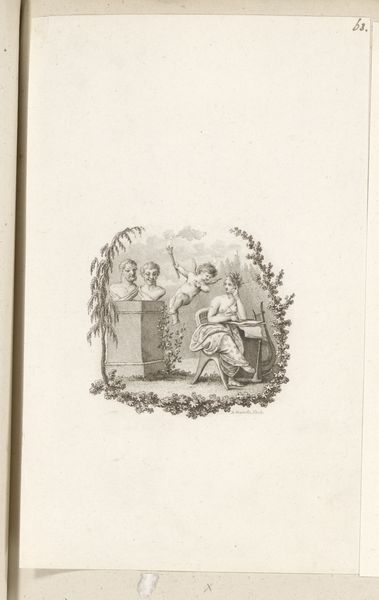
Fotoreproductie van Hagar en Ismael door Federico Barocci 1850 - 1900
0:00
0:00
Dimensions: height 81 mm, width 50 mm
Copyright: Rijks Museum: Open Domain
Editor: This is a photo reproduction of "Hagar and Ishmael" by Federico Barocci, made sometime between 1850 and 1900. It looks like an albumen print. It’s striking how intimate and melancholic the scene feels. What do you see in this piece, particularly given its historical context? Curator: Beyond the surface of a genre scene, I see a narrative steeped in power dynamics. Hagar, the enslaved person, and her son Ishmael, are figures often marginalized. The albumen print as a medium brings up interesting questions about reproduction and dissemination of imagery – who had access to this image, and what narratives were being reinforced through its circulation? Editor: That's a great point about the print's distribution. The original painting must have held different meanings for different audiences. Curator: Precisely. The romanticized style, while seemingly sentimental, potentially glosses over the very real struggles and social disparities inherent in Hagar's story. It's crucial to question whose perspectives are centered and whose are erased or distorted within such representations. How does this imagery contribute to larger conversations about race, class, and gender in the 19th century? Editor: It makes you wonder how a contemporary artist would represent this same story, perhaps focusing on Hagar's agency and resilience in the face of adversity. Curator: Exactly. By engaging with these historical images critically, we can challenge established narratives and promote more inclusive and equitable representation in art today. What have you observed differently now, after reflecting on the context? Editor: I now understand the weight of considering historical images through an intersectional lens; this print is far more than just a sentimental depiction of a biblical story. Curator: Indeed, by critically engaging with historical images, we confront difficult but necessary conversations that can promote equity and inclusion.
Comments
No comments
Be the first to comment and join the conversation on the ultimate creative platform.

